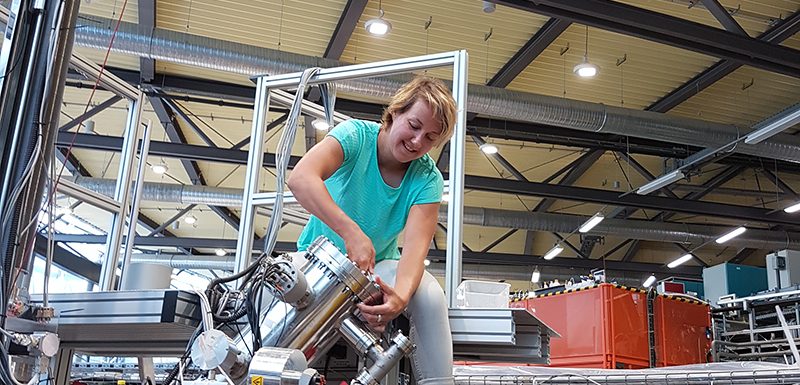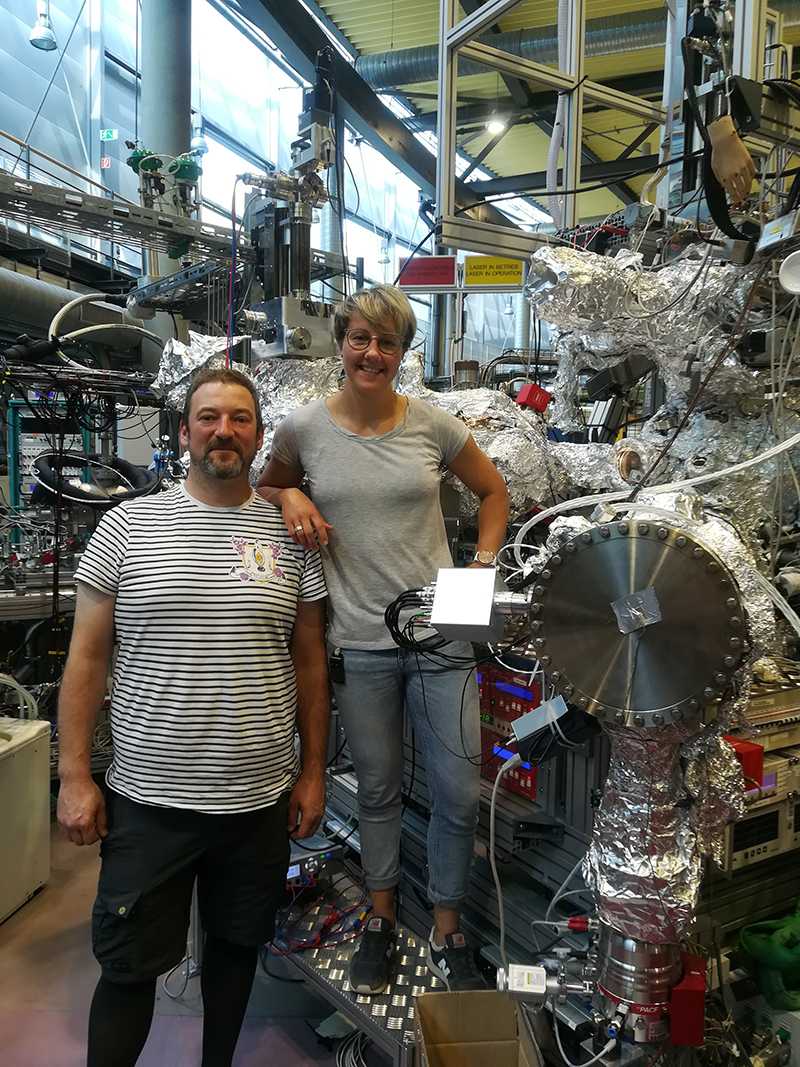
At BESSY II, we are operating some 50 beamlines, each of which offers the latest methods in spectroscopy and microscopy.
Each beamline has a dedicated beamline scientist, who not only manages all the projects on the beamline and knows its every secret, but also works with local and visiting scientists to get the best results out of the beam and its instruments for every specific research question they have. Without the beamline scientists, much of the science at BESSY II could never happen.
But who are they? What makes a good beamline scientist and where do they come from? In this little series you are going to find out. Today we introduce Ieva Bidermane, who works at the UE-52 PGM.
What’s the name of your beamline and what’s it like?
The beamline is UE-52 PGM, which serves two end-stations, CoESCA station and Nano Cluster Trap station. It’s a soft X-ray undulator beamline with photon energies up to 1600 eV.
For which research applications is this beamline especially suitable?
Beamline plus CoESCA end-station is envisioned for fundamental spectroscopy research on solid state samples – either brought along by the users or prepared in situ. With coincidence electron spectroscopy we aim to get deeper insights into the electronic structure of the materials that is hidden by other electron spectroscopy techniques. Since both time-of-flight spectrometers can be either used in coincidence mode or also separately, we have users interested to probe, say, two different core levels at the same time, that way obtaining information about the changes in specific regions at the same time. However the main application is still coincidence measurements.
What’s your background, scientifically? How did you get to be a beamline scientist?
I’m a physicist. I did my PhD in Paris and in Uppsala, studying organic molecules on surfaces. I carried out many beamtimes at various synchrotrons around Europe (Soleil, Max-Lab and Elettra) and by the time my PhD was done, I was curious to see how it would be to see the “synchrotron life from the other side”, not just coming to perform experiments for a week or two, but actually being part of the “synchrotron team”.
What is your work as a beamline scientist?
My postdoc contract implies that 50% of my time is given to beamline/end-station support and 50% to my own research. As a beamline scientist one needs to take care and oversee that the beamline is in a good working state, where one performs beamline commissioning for external users as well as for our own beamtimes, regularly checks all the equipment and takes care of fixing what needs to be fixed.
What is your biggest challenge in working with the beamline?
The biggest challenge is combining the tasks needed to be carried out at the beamline together with all the other responsibilities, especially when deadlines are approaching and some major fixes are needed at the beamline. It’s a fairly complicated job, as not everything that breaks, me and my colleagues can take care of on our own. Then one needs to coordinate help with the respective support groups, which I want to mention are some amazing people to work with, but it all takes time. And time is one thing that we usually don’t have at the beamlines, as we need to follow the beamtime schedule and you don’t want to disappoint the users by cancelling their beamtime.
“Beamline work is very diverse and it is more technical than scientific. I have to say for myself that I learned a good bit of technical things and tricks that can only benefit the scientific part of my research.”
What are you working on at the moment?
The main project at the moment, which me and my colleagues work on, is the final parts of the coincidence logic for our main experimental technique. That implies working jointly on obtaining test data and writing software bits, data acquisition and evaluation processes. It’s a team effort, where each one takes their part in.

What have you always wanted to tell people about beamline work?
Beamline work is very diverse and it is more technical than scientific. I have to say for myself that I learned a good bit of technical things and tricks that can only benefit the scientific part of my research. To add to that, I never thought it would be so much of a management work (both people and disasters ;-)). One also needs to be very versatile, especially dealing with users. Sometimes it can be a lot of requests, which need to be carried out in a short time window, so it keeps you on your toes and it is definitely never boring. You also get to see a lot of different science other than your own, helping the users perform their research.
What is the most rewarding part of the work as a beamline scientist for you?
I would say the most rewarding moments are the ones where things work out as expected, which, due to complicated experimental techniques and the amount of tools and devices we have around, does not necessarily happen always.
And when the users leave happy and satisfied, with smiles on their faces and nice data in their pockets.
(kh)
